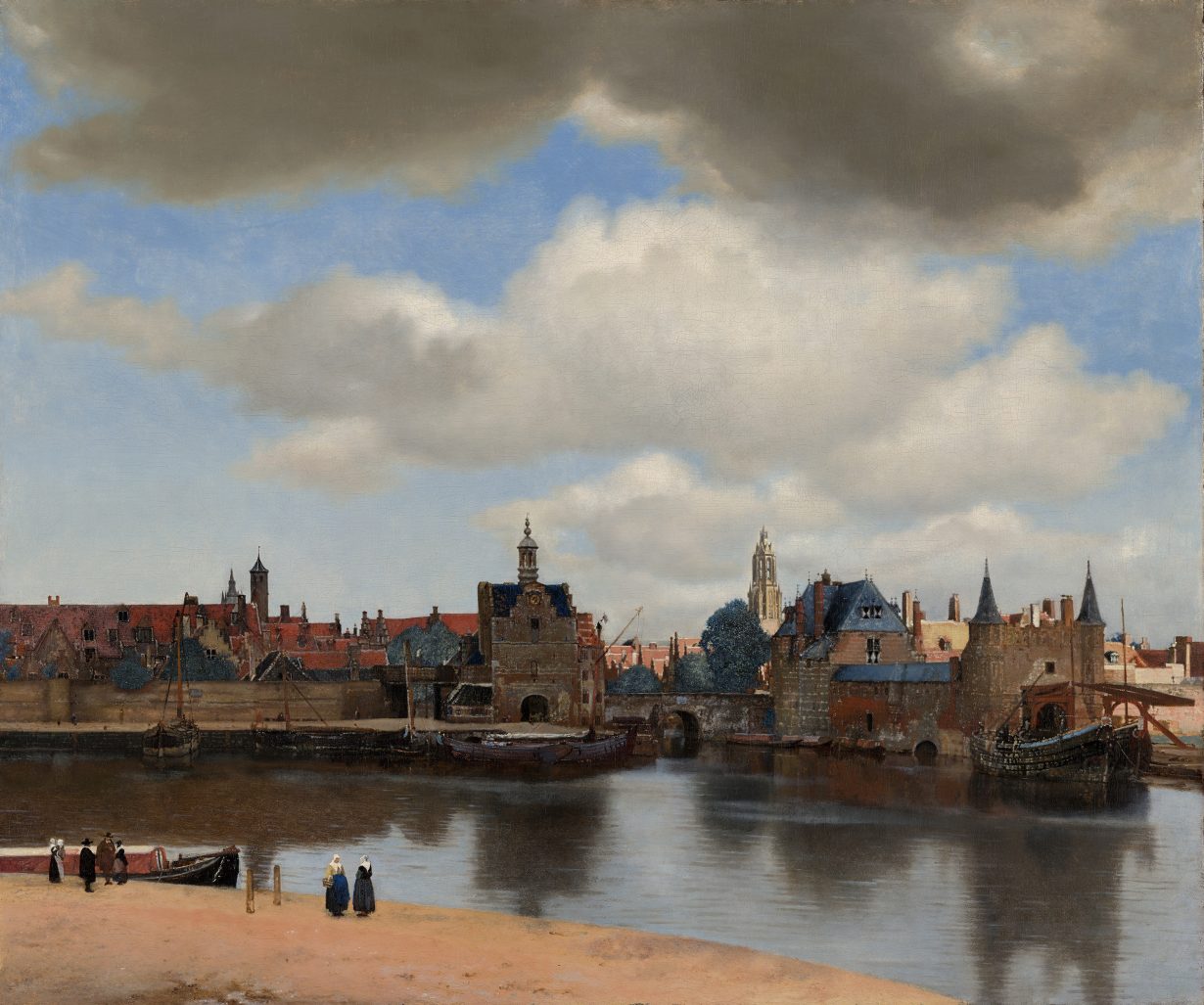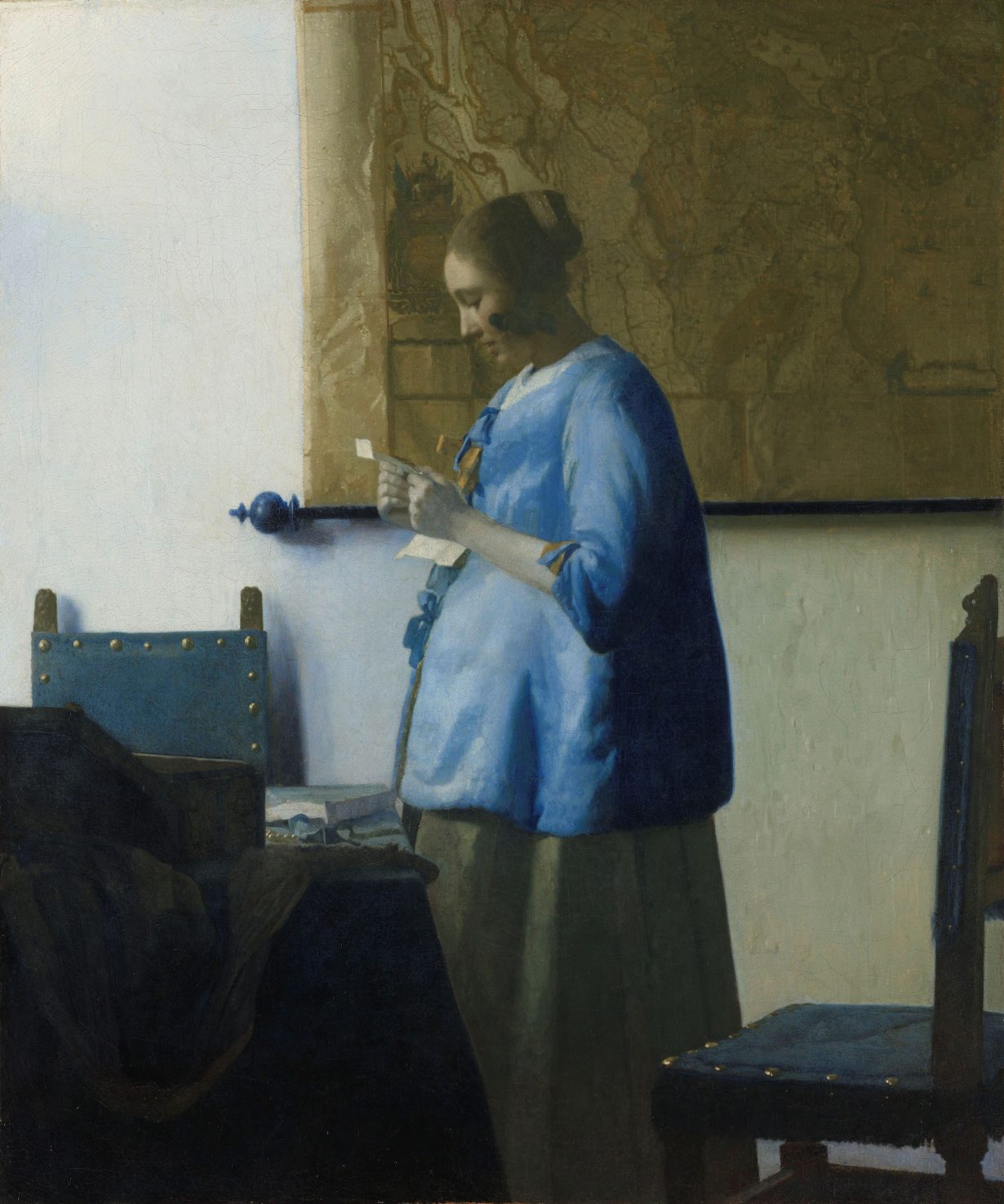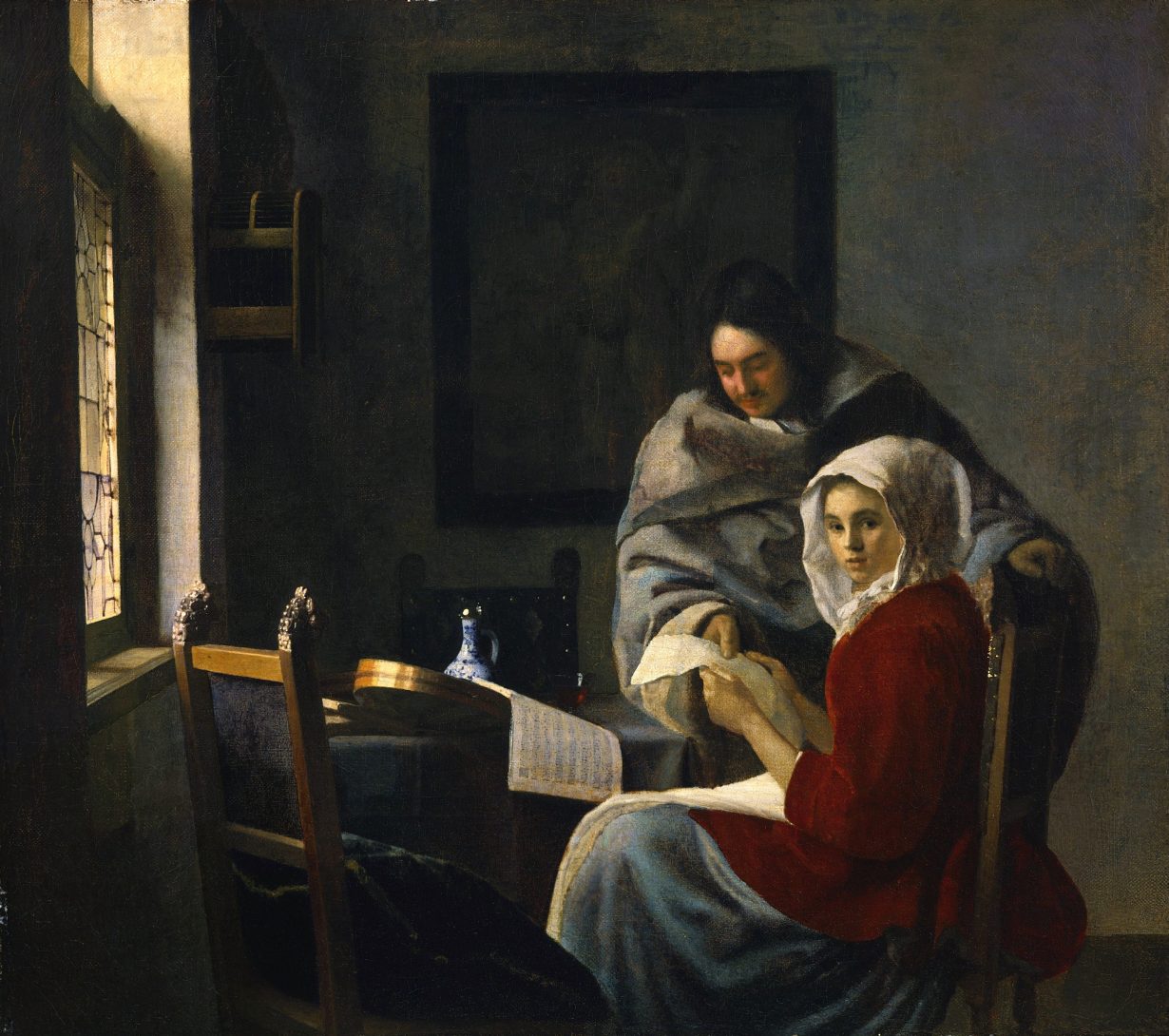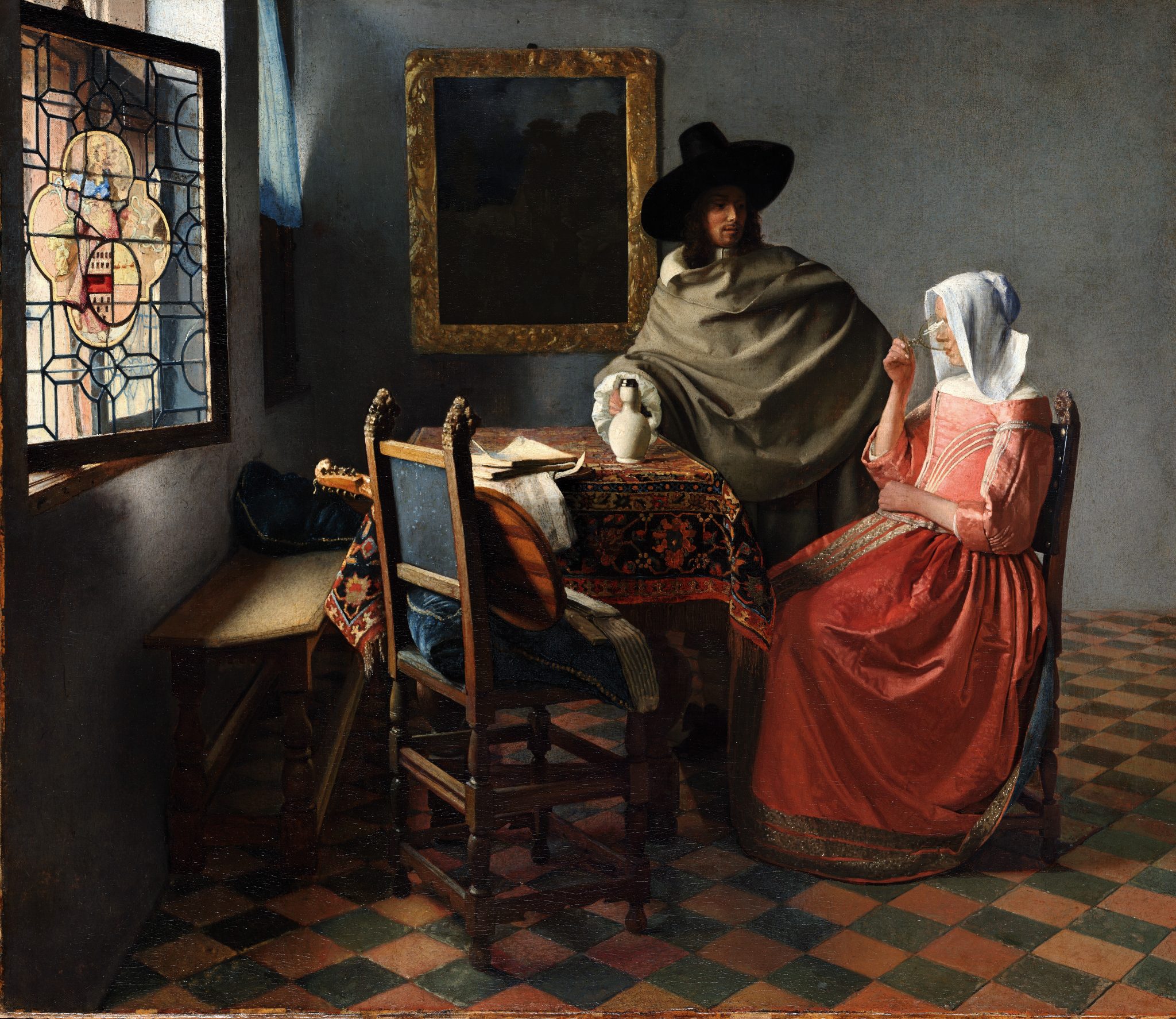The Old Master gives us what we might think of as a philosophy, about the relationship between art and everyday life
Sometimes, you’ll hear something about one of those blockbuster exhibitions a big museum in the middle of a capital city puts on, often called ‘TITIAN’ or something like that, and you’ll think to yourself: yeah, fair enough. I really should make it my business to go. Such, at any rate, was my thinking when I heard that the Rijksmuseum had managed to get almost all of the 30-odd paintings usually attributed to Johannes Vermeer together in the same place, at the same time: from February through to early June. A gallery, in Amsterdam, and you’re surrounded by, like, a shit-ton of Vermeers – more Vermeers than anyone else in human history has ever been surrounded by simultaneously. What could possibly be better than that?
And actually: I know it probably won’t sound like much to you. But I have to say I’m kind of proud of myself, just for managing to go. I have two children under four. I hadn’t left the UK since the first one was born. I don’t have the sort of family life where I can just up and leave everyone for a few days to see some paintings. My partner and I had to leave the older one with his grandparents, take the younger one with us on a 16-hour ferry ride each way. But I saw the Vermeers!
To my mind (and while I admit there might be some room for disagreement here, I also think that aesthetic judgements like these can only be made in a way that aims at objectivity) no Old Master, except perhaps Giorgione, is anything like as wonderful, as entrancing, as Vermeer. And so almost any difficulty – logistical or toddler-related or otherwise – is, as far as I’m concerned, worth enduring.

What is it that I find so fascinating about Vermeer? In a way it’s all there and obvious as soon as you enter this exhibition. The curators kick off proceedings with two of Vermeer’s least characteristic works: his only two extant paintings of exteriors, The Little Street (c. 1657–58) and the View of Delft (c. 1660–61). But while the paintings don’t much resemble the interiors Vermeer more usually produced, they nonetheless serve to illuminate the worldview their creator presented in them.
View of Delft was Proust’s favourite painting: apparently the writer Bergotte dies in front of it, in a scene from one of the later parts of In Search of Lost Time (sorry, I’ve only read Swann’s Way). At any rate: it makes perfect sense to me that someone might respond to the View of Delft by collapsing and dying. British art historian and broadcaster Andrew Graham-Dixon once compared the cityscape it depicts to a sort of heaven (Secret Lives of the Artists, 2002), but it is a heaven whose beauty is almost awful to behold. Witnessed from across the river, Delft’s houses a thin band between the water and the sky, the city seems too perfect, too pristine and still. Life stirs on the nearside of the bank, though still fuzzy and slightly too far away – but no one can be seen in the town. We know, in seeing Vermeer’s Delft, that we could never live there. The Little Street, by comparison, seems far cosier. The doors to the house, to the yard, are flung clean open. But the faces of the women sitting there, or at work, are too distant to quite work out. Even in its welcome, The Little Street pushes us away. There is no place for us there either.

And this, I guess, is why I’m so entranced by Vermeer. More than any other great painter, he gives us what we might think of as a philosophy, about the relationship between art and everyday life. This is perhaps because he lived so much more of said ‘everyday’ life than other Masters. A figure whose reputation, in his own lifetime, did not stretch much beyond his native Delft, Vermeer’s relatively miniscule output was produced as he juggled painting with other responsibilities – including keeping an inn, selling other artists’ work, and raising his 11 children (four more died before their baptism).
Almost all of Vermeer’s great interiors are manifestly set in the same room, with its chequerboard flooring and window on the lefthand side; they even seem to be posed for by the same few (mostly women) models. In these paintings, we see women (but never, as the 1985 Peter Greenaway film A Zed & Two Noughts points out as a central plot point, their legs) performing as it were ‘ordinary’ actions: playing music, receiving letters, holding conversations, pouring milk.
We are placed in Vermeer’s interiors, often framed with curtains, as voyeurs: when his subjects look at us (if they don’t have their heads stuffed in a wine glass, or their backs turned away), they do so with looks that are typically accusing, sometimes pleading; the 1659 The Glass of Wine in particular looks like she wants us to help her escape the guy who’s giving her the glass, that he’s making her very uncomfortable. The one obvious exception is the Girl with a Pearl Earring (c. 1665), who looks at us invitingly, with bedroom eyes – but this is of course not really an interior (rather a ‘tronie’, an idealised portrait of a head). Though, it has to be said, even she looks uncomfortable: for all the Girl makes eyes at us in an ‘inviting’ way, there is fear there too.

Vermeer’s ‘take’ on life can thus seem profoundly alienating, indeed profoundly alienated. Moving through the exhibition, from the exteriors through a room containing Vermeer’s (whisper it: mediocre) early work, the interiors begin to accumulate: at first a room containing one (the 1657–59 Girl Reading a Letter at an Open Window, cited here as his probable earliest mature work), then another (the iconic Milkmaid, 1657-8), then more and more and more, until the endless basic sameness starts to make these paintings feel even more uncanny than they usually do: wherever you look, there is a guy in the seventeenth century trying to trap you, forever, in the same room. Come here, look: a woman! And she’s playing the virginal! As if as a matter of compulsion: the same basic painting, again and again and again.
On the blurb for a book in the giftshop afterwards, I read Vermeer described as ‘the master of tranquillity’. This strikes me as precisely wrong. His paintings are characterised, yes, by this immense stillness. But it is a horrible stillness, a stillness every bit as awful as the beauty of the View of Delft. Life, in all its wonderful liveliness, fixed and crystallised, almost to the point where it becomes like looking at something dead. Upon seeing the c.1663 Woman in Blue Reading a Letter, in which an obviously pregnant woman is reading a letter with a somewhat tentative look on her face, my partner remarked that she could only see it as being about the woman receiving news of her husband’s untimely death.

Is Vermeer just telling us something somehow horrible, though? Up close, there is always that very distinctive haziness about Vermeer’s figures, this almost pixelated quality sometimes attributed to his use of a camera obscura. But no matter how it came about, no matter what technique Vermeer applied, everything seems somehow cloaked – as if even the clearest, most pristine scene (as Vermeer’s paintings typically appear to be, at first glance) cannot quite be seen. They show us ‘life’. But no matter how perfectly Vermeer has rendered said ‘life’ on the canvas, there is always something missing: some quality that the artist is doomed to forever omit. In their perfect, airless world we must remain forever a stranger. This is life, but it cannot be lived.
This is not a failure. It need not even be particularly depressing. As I walk round the gallery, attempting to navigate the crush of people flocking snippily around each of Vermeer’s great works, my thoughts are constantly interrupted by the mischievous babble coming from my daughter behind me, struggling in her mother’s arms and trying to run off.
“We’re going to have to leave,” my partner says. “People are looking.”
“Don’t worry about it,” says a very understanding gallery attendant. “She is surrounded by so many beautiful things! Of course she wants to make some noise!”
It’s a very optimistic reading of her behaviour. I think to myself: I know why she’s making so much noise. She is surrounded by people, and she feels very disturbed. And quite rightly, to be honest, because all of them are looking at things that are not her. These paintings are good, sure. But she’s real!
When I planned this trip, I had anticipated maybe spending hours in the Rijksmuseum, wallowing in the Vermeers I had come all this way just to see. I would go through once, loop back on myself, meditate on each of the individual paintings: fixate on little details, lean in close and really absorb these things, as objects. But then I feel the tiredness in my legs, the weight of all the other gallerygoers I’m almost stumbling over. I take my daughter in my arms and bounce her up and down, kiss her little tummy, beam at her, assure her that I’m not really so interested in this stuff, that she’s still the one to me.
“Yeah, all right,” I say to my partner. “I’m ready to go.”
And then I think: well isn’t this, in a way, what the horrible perfection of Vermeer’s best work suggests? Isn’t this ultimately why I find his work so fascinating?

In Vermeer’s work, we see everyday life rendered, I suppose, as if perfect. Time and again, Vermeer skewers his subjects, like an entomologist. In so doing, he both elevates them – as if to a Platonic heaven – and does them violence: he ceases to allow them to live. And here, Vermeer’s work seems to be telling us, art and life must come apart: the real is, precisely, not ideal.
We live – as the later Wittgenstein, who rather grappled with similar problems in his work, points out – on rough ground. Our lives are difficult, uncertain, wearying – and often quite profoundly un-beautiful. In them, we will toil despite our talents in obscurity, or die suddenly and leave our families in debt. The kids must be fed, the inn must be kept. There’s no time today for painting.
So life is unfair. And our ability to produce things of beauty – of such profound beauty, for instance, as View of Delft – seems only to heighten this unfairness, to make our own life’s refusal to meet anything like our ideals, whether aesthetic or ethical, seem like a kind of sick joke. But the truth – and this is what Vermeer, ultimately, discloses to us – is that it could not really be otherwise. The ideal cannot accommodate us: heaven, like Vermeer’s Delft, is a home fit only for the gods.
And there is something deeply therapeutic about this insight. It’s not that a better world isn’t possible; it’s that we shouldn’t want a perfect one. Vermeer shows us what is horrible about perfection, its hostility to life. And so leaves us free, to wallow in the muck.
We take a tram to where we left our luggage, in the station, then check into our hotel room, then get some food, then go to sleep. My daughter goes to sleep on my back before dinner, and lies on her mother through the meal. We are exhausted, on holiday and happy. I do not think about Vermeer at all.
